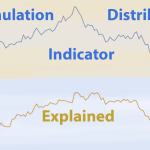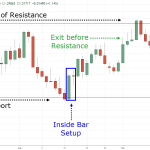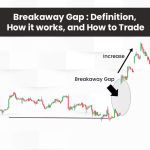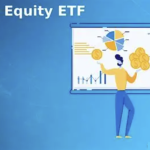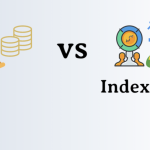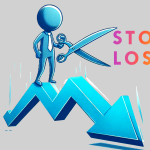A secular bull market is a financial market in which asset values are on the rise for an extended period of time and investor sentiment is positive. While it is usually associated with the stock market, the term can also refer to the bond market, currency, real estate, and commodity markets. Let’s dive into understanding the secular bull market and how you can use it in your investment strategy.

What Is a Secular Bull Market?
Bull markets are characterized by positive sentiment, investor assurance, and earnings growth, all of which lead to an upward trend in the market. When this upward trend is supported by structural factors like technological innovation, demographic shifts, and regulatory changes, an even longer positive trend, known as a secular bull market, arises. Unlike a bull market which lasts a few months or years, a secular bull market can last decades.
A regular or cyclical bull market may experience downturns or corrections, which are generally followed by a recovery that leads to new highs. A secular bull market can have several bull and bear cycles within it, but the general trend of the market is upward.
How Does a Secular Bull Market Work?
A secular bull market is based on factors that are associated with long-term growth and structural changes. One example of a secular bull market, albeit an extended one, is the period between 2009 and 2020. During this time, the S&P 500 rose on average and downturns were relatively brief or shallow. An investment in the S&P 500 during this period would have given a return of over 400%.
Since they are based on long-term growth or contraction, a nation’s gross domestic product (GDP) is also a good indicator pointing toward secular bull and bear periods. These periods are also marked by favorable economic conditions like low interest rates and strong corporate earnings, which provide support to equity markets.
The trick to investing in a secular bull market is to follow a buy-and-hold investing strategy by purchasing stocks, mutual funds, or other commodities that you are willing to hold for an extended period of time. This type of long-term investing during secular bull market runs can offer a very favorable risk-reward ratio and positive market returns on your financial assets. However, recognizing the existence of a secular bull market and investing in it requires careful analysis and monitoring, as there may be periods of downturn or correction within the overall upward trend.
Economic Growth Factors
When the economy is strong and growing, that’s when secular bull markets tend to show up. In the presence of low inflation and interest rates, investors feel confident and consumers spend more, which results in rising asset prices and feeds into economic growth. However, there are several other factors that can affect market conditions, and, even during a period of high economic growth, investors must look at multiple indicators to determine the presence of a secular bull market.
Investor Sentiment
Investor sentiment is the general mood of investors towards a particular asset or market, which can lead to a rise or fall in its price as well as market volatility. Positive investor sentiment can lead to a bull market but can also lead to market bubbles and overbought shares or assets. Some investors, called ‘contrarians’, also choose to go against the general market sentiment and trade in the opposite direction. In order to recognize investor sentiment and how it may be affecting the market, various indicators, surveys, and analyses may be employed.
Stock Market Fundamentals
Stock market fundamentals like the supply and demand of stocks, interest rates, inflation, economic growth, and investor sentiment can all help support a secular bull market. As a first step, when you’re thinking of investing money in a secular bull market, it is crucial to understand fundamental analysis and technical analysis. Fundamental analysis helps you make long-term decisions and assists you in figuring out the real value of a stock, whereas technical analysis is useful for short-term trading choices and helps to decide when to buy and sell in the market.
Long-Term Secular Trend
As you’ve seen, a secular growth trend signals an improvement in the fundamentals of the economy as well as the market. This results in stable growth, which can sustain long-term upward trends in prices.
During these periods, investors generally believe that the upward trend will persist for a considerable time. This usually happens when the country’s economy is booming and employment levels are high. A secular bull market can continue for many years. For instance, the secular bull market from 1982 to 2000 lasted for 18 years.
However, it is worth keeping in mind that secular growth can also disrupt markets. The growth of a particular industry can result in the shrinking of a competing industry, resulting in uncertainty, job loss, and wealth inequality. Therefore, secular growth also comes with certain challenges in addition to its positive market effects.
Boost Your Secular Market Earnings With Above the Green Line
Investing in a secular bull market can be one of the most profitable financial decisions you make and can result in significant future earnings. Whether you’re looking to earn through a dividend yield strategy or by buying and holding stocks until it’s profitable to sell, Above the Green Line can help you finetune your investment strategy and make the most of secular bull market cycles.
Sources
What Is a Bull Market, and How Can Investors Benefit From One?
Are Stocks in a Secular Bull or Bear Market Right Now? | Nasdaq
The Secular Bull Market
What Is A Bull Market? And How To Invest In It?
S&P 500: $100 in 2009 → $689.83 in 2023
What Is A Bull Market? And How To Invest In It?.
What Is A Bull Market? – Forbes Advisor – Investing
What Is a Bull Market, and How Can Investors Benefit From One?
Secular Market: Definition Vs. Cyclical, How It Works and Example
Investor Sentiment | Definition and Meaning | Capital.com
An Overview of Bull and Bear Markets
Are Stocks in a Secular Bull or Bear Market Right Now? | Nasdaq


